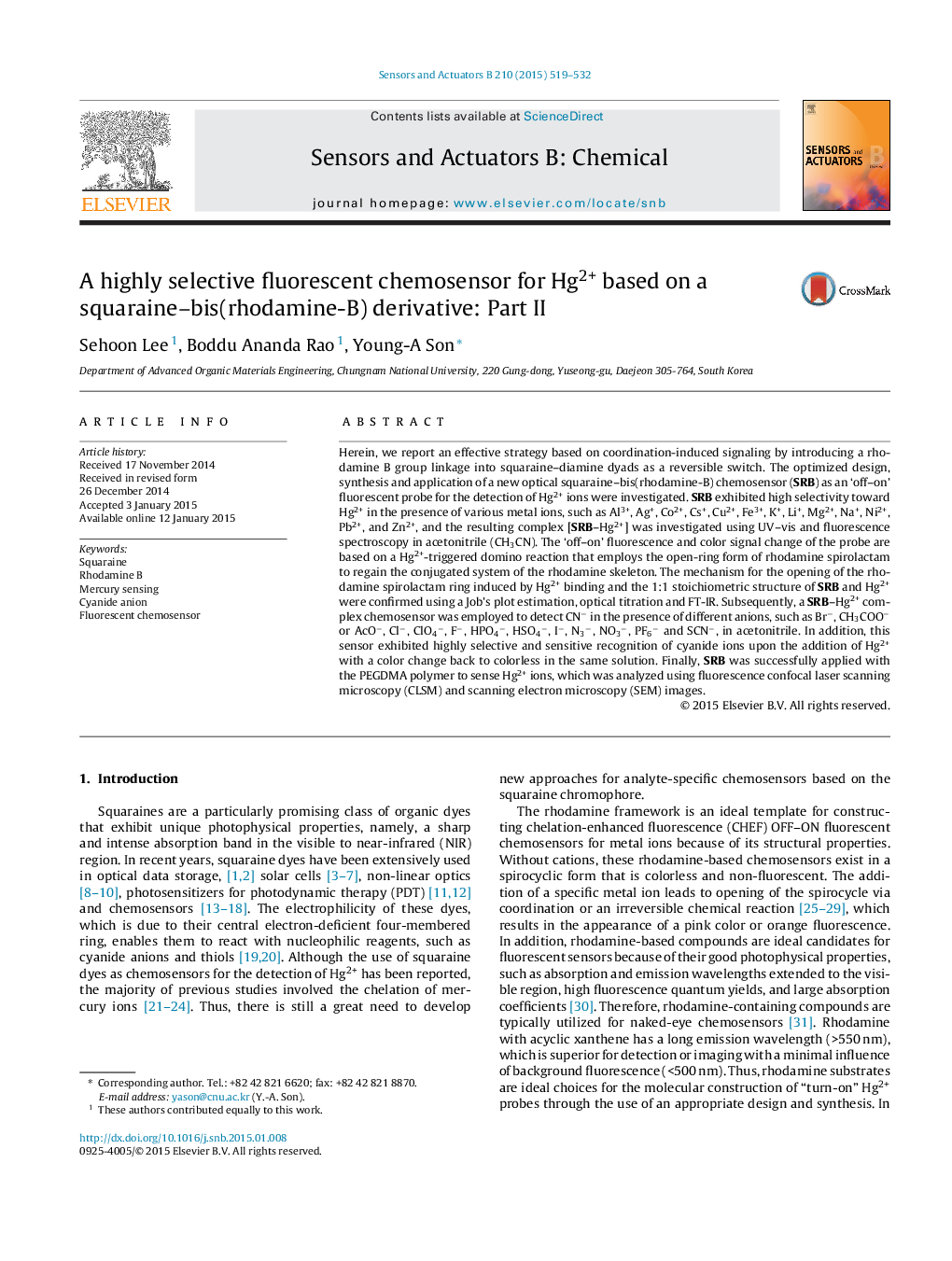| کد مقاله | کد نشریه | سال انتشار | مقاله انگلیسی | نسخه تمام متن |
|---|---|---|---|---|
| 741909 | 1462081 | 2015 | 14 صفحه PDF | دانلود رایگان |

• Design and synthesis of a new squaraine–bis(rhodamine-B) (SRB) chemosensor was in high yield.
• Chemosensor SRB as an ‘off–on’ fluorescent probe for the detection of Hg2+ ion.
• The SRB–Hg2+ complex structure was confirmed via FT-IR studies.
• The reversibility of the SRB–Hg2+ complex was realizable by the introduction of CN− ion.
• SRB was mixed with PEGDMA polymer for chemosensing the Hg2+ ion.
Herein, we report an effective strategy based on coordination-induced signaling by introducing a rhodamine B group linkage into squaraine–diamine dyads as a reversible switch. The optimized design, synthesis and application of a new optical squaraine–bis(rhodamine-B) chemosensor (SRB) as an ‘off–on’ fluorescent probe for the detection of Hg2+ ions were investigated. SRB exhibited high selectivity toward Hg2+ in the presence of various metal ions, such as Al3+, Ag+, Co2+, Cs+, Cu2+, Fe3+, K+, Li+, Mg2+, Na+, Ni2+, Pb2+, and Zn2+, and the resulting complex [SRB–Hg2+] was investigated using UV–vis and fluorescence spectroscopy in acetonitrile (CH3CN). The ‘off–on’ fluorescence and color signal change of the probe are based on a Hg2+-triggered domino reaction that employs the open-ring form of rhodamine spirolactam to regain the conjugated system of the rhodamine skeleton. The mechanism for the opening of the rhodamine spirolactam ring induced by Hg2+ binding and the 1:1 stoichiometric structure of SRB and Hg2+ were confirmed using a Job's plot estimation, optical titration and FT-IR. Subsequently, a SRB–Hg2+ complex chemosensor was employed to detect CN− in the presence of different anions, such as Br−, CH3COO− or AcO−, Cl−, ClO4−, F−, HPO4−, HSO4−, I−, N3−, NO3−, PF6− and SCN−, in acetonitrile. In addition, this sensor exhibited highly selective and sensitive recognition of cyanide ions upon the addition of Hg2+ with a color change back to colorless in the same solution. Finally, SRB was successfully applied with the PEGDMA polymer to sense Hg2+ ions, which was analyzed using fluorescence confocal laser scanning microscopy (CLSM) and scanning electron microscopy (SEM) images.
Figure optionsDownload as PowerPoint slide
Journal: Sensors and Actuators B: Chemical - Volume 210, April 2015, Pages 519–532